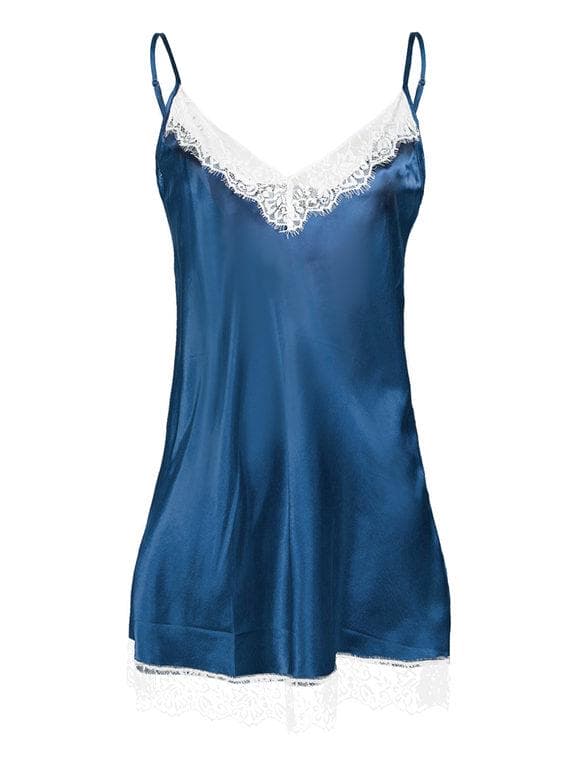
Petticoat
Petticoat: “last bulwark of nudity” that leads to the summit of seduction
At the end of the 19th century, the petticoat represented that garment that let one imagine, dream, and “give vertigo to the young (and less young…)”. At the beginning of the 1900s, it began to transform itself, gradually becoming a light, more or less transparent veil that let us perceive the body even more in the intriguing game of “I can’t see”. Emphasizes the curves, “the last bulwark of nudity” which leads to the summit of seduction.
Petticoats in flannel, madapolam, linen or cotton batiste, egg skin. Then also taffeta, lace, pure silk, and above all satin: that rustling satin so soft that it blends with the skin, so tender to the touch, so pleasing to the eye. Embroidered by hand, of course: with entre-deux, à-jour, stitch grass, Migliaccio, and with all the other stitches — innumerable — in vogue.
The Revolution with Poiret
But, if in the first decade of the 20th century the petticoat continued its journey with few changes, the first real “revolution” came in the 1920s with Poiret, who replaced flannel and muslin petticoats with cotton, cambric, leather petticoats. ‘egg, to be worn with the new short, linear dresses or with “dancing” wedges, “handkerchief” skirts.

Even more fascinating, petticoats triumph in life, in literature, and on screens: white telephones and white satin petticoats, cigarettes in long ivory holders and black silk petticoats, heroines of Francis Scott Fitzgerald, Gloria Swanson, Jean Harlow, Joan Crawford, Doris Duranti, vamp, and dark lady.
Setback in World War II
In WWII, petticoats suffer a logical “setback”. When heating in homes is a mere memory, they can be made of thick cotton or even wool. Those of silk are kept with extreme care, as a precious asset for “great, or special, occasions”. But here, after the dark war years, reacting to the forced sacrifices and restrictions, women are seized by an irrepressible desire – almost a frenzy, endorsed by the return of fashion magazines – to dress: not only “over”, wearing dresses for morning, afternoon, evening, but “below”. The large, light, ultra-feminine parures fascinate, with petticoats matching the panties, the bra, almost always the nightgown, often the dressing gown.
The laundry revolution
The little girls take off the hated petticoats with high necks and wide shoulder pads, and the older sisters and mothers strengthen their seductive power. Bursting and bursting from the screens, with their “dessus”, Silvana Mangano, Lucia Bosé, Sophia Loren, Yvonne Sanson, and Brigitte Bardot. In 1947, Marcel Rochas began his autumn-winter show with a young model in a white satin skirt and black lace bodice. It is the signal of what is called the “underwear revolution”.
The lines of the petticoats
Petticoats must increasingly follow the line of dresses. The French look and the new look impose it. Therefore they are “bust” or in any case cut like a bra in the upper part, with folds on the sides for dresses with very full skirts, while the spindle lines are close-fitting. To enhance the “wasp waist” effect, a lace guêpière can be worn over the petticoat, when it is not inserted into the dress itself (especially for evening, with bare shoulders). The following year, after the guêpière, Rochas creates the “bustier-guêpière”, which ends with a petticoat still in white satin, but veiled by notches.
Among these variants of the petticoat, we find the “jupon” that Lilian (among the number one in the panorama of lingerie creators of the time) created of slightly starched candid batiste. Or even in sumptuous and rustling stiff taffeta, known as jupon musical, because “it accompanies every step with a fru fru that will probably make our men dream as those of fifty years ago dreamed”, according to the chronicles of the time.
The classic petticoat
Meanwhile, the “classic” petticoat returns to being mostly white, in linen or cambric, followed by pastel colors, even if in the “elegant” version it is in black or ecru lace. And then here it is again in satin, pure silk , silk crepe, satin crepe, lace, cut on the bias, embroidered, trimmed with scallops, trimmed with lace, flounces, flyers, entre-deux; but also open on the side, closed like a dressing gown with a knot.
Meanwhile, nylon and other synthetic fibers have arrived which – thanks to their crease resistance, transparency, variety and the elimination of ironing – conquer most of the young public. Even if in the evening, when you take off these “lingerie” garments, you see real sparks flying. You hear a kind of sizzling that worries you at first: but only for a short time (especially since, following research, the defect is eliminated).
the petticoat wins against the knickers-underskirt
Moreover, the petticoat, which without a fight won its battles even against the knickers-underskirt presented by Vionnet in the 1950s, has more than formidable rivals: rompers (descendants of the “combination” so popular in the “roaring years” ) then replaced by bodysuits which, focusing on charm (special fabrics, transparencies, cuts that follow the body, enhancing it) and grouping three pieces (slip, bra, panties) into one, enjoyed extraordinary success.
On the big screen
But the petticoat does not give up, thanks once again to the big screen in which she stars with Cibyl Sheppard, Julia Roberts, and Jennifer Lopez. Fashion, in the game of eternal returns, sees it more and more similar to dresses while dresses become more and more similar to petticoats. On the other hand, the “slip” shoulder pads are now a classic in clothing. So much so that even at Cadolle, which since the 1800s has been “dressing” the most “à la page” Parisians in lingerie, presents petticoats which, undoubtedly, reproduce the successful styles of the past more or less updated. Winking at the 70s, remembering the years of Emmanuelle, evanescent, seductive, fascinating, the “love story”
Read also:
Louis Vuitton Uomo goes around the world for SS 2021
Le Grand

